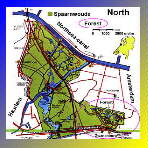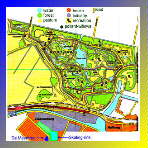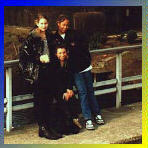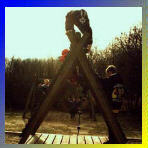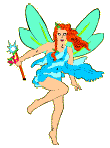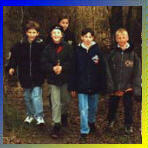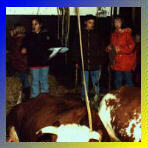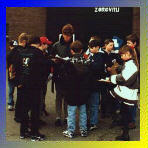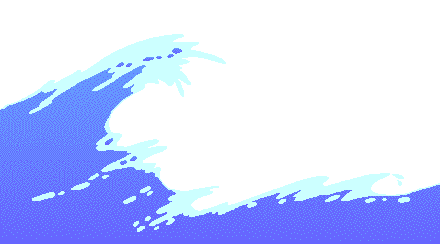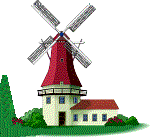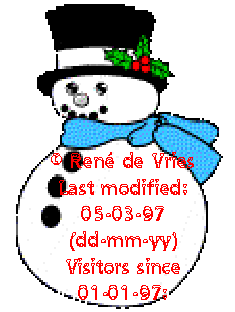History

Watermill
Heavy storms and high tides caused that great parts of the peat-soils washed away. Several times came a great flood. So they decided to build a dike ("De Hoge Spaarndammerdijk") to save the left overs of the peat-soil and to protect cities like Haarlem. More about a dike and dike-burst you can read on the web-page about the story of Hans Brinker and our web-page about De Haarlemmermeer.
When the dike was constructed, they built mills to pump the water behind the dikes away. The hinterland was save now. But in front of the dikes there were two shallows / lakes: "Het IJ" and "Wijkermeer". Roughly 100 years ago those two shallows / lakes were reclaimed (impoldered). So the "Houtrakpolder" (near Zwanenburg) and the "Spaarndammerpolder" were created.
In 1969 the Dutch Government, five municipalities and the province made the decision that the area between Amsterdam and Haarlem must stay a "green-area", without industry or buildings. So the plan "Spaarnwoude" was born, an area of 2750 hectare.
General
Information
Press the button to see a larger map of the area (256 Kb)
Oosterbroek - is made for pedestrians and cyclists. They made also a climbwall.
Buitenhuizen - many ways for recreation: swimming, rollerblade / inline-skating, canoe, model aeroplanes, walking-tours and an information farm (Zorgvrij).
Westhoffbos - a forest for walking-tours and jogging.
Houtrak - a forest / park with many possibilities for playing, swimming, and so on. The pupils of The Meerbrug go often to this site, because it is very near Zwanenburg.
Dijkland - a noise abatement area with many grazinglands and three old nature-lands: De Batterij (an old forest of Willows) near Zwanenburg), Spaarnwouderveen (also known as Haddingsbaak) with Willows and Birch-trees and the banks of De Liede.
Appearance
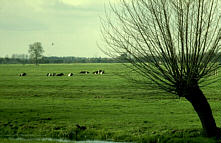
Pollard-Willow
In Spaarnwoude are many Willows growing; see our Tree-page for more information about this tree.
The deciduous trees lose their leaves for Winter. On March 4, 1997, grade 5 and 6 went to the information farm "Zorgvrij". As you can see on the photos below, the forest is still very bare.
If we are lucky, we get snow in Winter. Or ice. The waters in Spaarnwoude are excellent suitable for skating.
Wildlife and plants
Press the button to see a larger map of the area (256 Kb)
Seen birds are: windhover, short-eared owl, plover, black-tailed godwit, redshank, ruff/reeve, common snipe, oystercatcher and tit.
Of course we also saw animals like the rabbit, the hare and the weasel.
We founded in books that some special herbs nowadays come back in Spaarnwoude: red clover, buttercup, small waybread and the REAL! cuckoo gillyflower.
Importantance and Future
Press the buttons to see larger photos
The floristic wealth is one of the highest of Holland.
The kids like the forest because it gives them the possibility to play in the nature; Holland is one of the densely populated countries of the world. So there is not much forest left to play in!
We all know that Spaarnwoude must maintain forever, so our child's children can play in this "green lung" as well.
The trees in the forests are only cut down when they are ill; they will replaced immediately. New trees are planted as well.
It must be clear now that Spaarnwoude has no commercial use. It's for the welfare of the people.
Art, Music and Poem
The inhabitants of Ruigoord want to stay and live there for ever! Most of the inhabitants of Ruigoord are artists (painters, poem, writers). Not only the people of Ruigoord want that this village will survive. Much people of Holland hope that the city of Amsterdam will stop their policy of expansion! An new harbour could harm the live and welfare of Spaarnwoude.
We didn't have the time to search for more information about art, music and poem about Spaarnwoude. We only think that Spaarnwoude is a piece of art by itself. But we made some poems by ourself; not only about animals which live in Holland, but also about "your" animals. In Holland we call this kind of poetry "Elfjes". Click on the fairy below to read the pupils poetry.
Excursion
Grade 5-6 (groep 7-8) visited this farm on March 4. We made a quest through the farm and learned much about cows, horses, goats,, sheeps, pigs, and much more special animals.
The farm is situated in the forest, as you can see on the photo at the left.
Quest through the farm
Our teacher, Mrs. Hut, checks the forms.
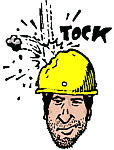
We all know that is impossible to make a final report about Spaarnwoud for nature is always changing. If you want more information, please don't hesitate to email us your questions!
